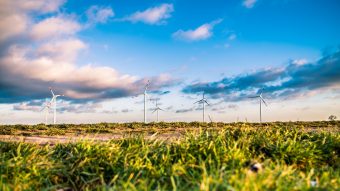
A decarbonisation strategy can bring benefits to the Central America region at the same or lower energy system costs than the current planning strategy, according to a new report by the International Renewable Energy Agency (IRENA).
The report finds the decarbonised pathway would cost the region around USD 20 billion less than the planned scenario in the period 2018-2050.
The analysis shows improved power system integration can help the region exploit abundant renewable energy potential, estimated at around 180 gigawatts (GW) – a tenfold increase from the region’s installed capacity today. ‘Renewable Energy Roadmap for Central America: Towards a Regional Energy Transition’, finds achieving this target would require increasing the total installed capacity share of renewables in the regional power sector to 90 per cent and electrifying 75 per cent of region’s total fleet, by 2050. The study contributes to ongoing discussions on the energy transition in the region, and related initiatives.
IRENA’s roadmap outlines an ambitious, yet achievable Decarbonising Energy Scenario (DES) that reduces CO2 emissions in Central America by 70 per cent by 2050 compared to the 2050 ‘Planned Energy Scenario’ (PES).
More:
“Central America is entering a crucial decade for shaping its future energy system,” said IRENA Director-General Francesco La Camera. “The region has a unique opportunity to ensure sustainable development with renewable energy resources that can bolster its energy security by mitigating fossil fuel dependence, while reducing costs, stimulating the region’s post-COVID-19 recovery and addressing climate change.”
Scaling up the annual deployment of renewables in the region three-fold by 1.4 GW per year compared to planned deployment would put the region on track to achieving its renewable energy target, according to IRENA’s analysis. To further reduce emissions from the transport sector, green hydrogen is recommended as an alternative fuel for heavy cargo road transport as well as international shipping.

The report also points to key challenges in the region in achieving universal access to electricity and clean cooking technologies. Currently, 37 per cent of households in Central America do not have accdeess to clean cooking technologies and fuels. In the DES, this share would fall to just one per cent thanks to the introduction of improved cookstoves and electric stoves, which would require cumulative technology costs of around USD 12.5 billion during the period 2018-2050.
Additional health and socio-economic benefits would include reducing the pollution from cooking activities, benefiting women and children in particular.
IRENA’s analysis serves as technical guidance that can support the decision-making process of policy makers, energy planners, government institutions and the private sector to define low-carbon development in the region. The findings can cast light on the design, elaboration and implementation of energy plans, Nationally Determined Contributions (NDCs), national mitigation plans and investment plans that are ongoing or in the pipeline.
Read the full report here.
Source: IRENA


